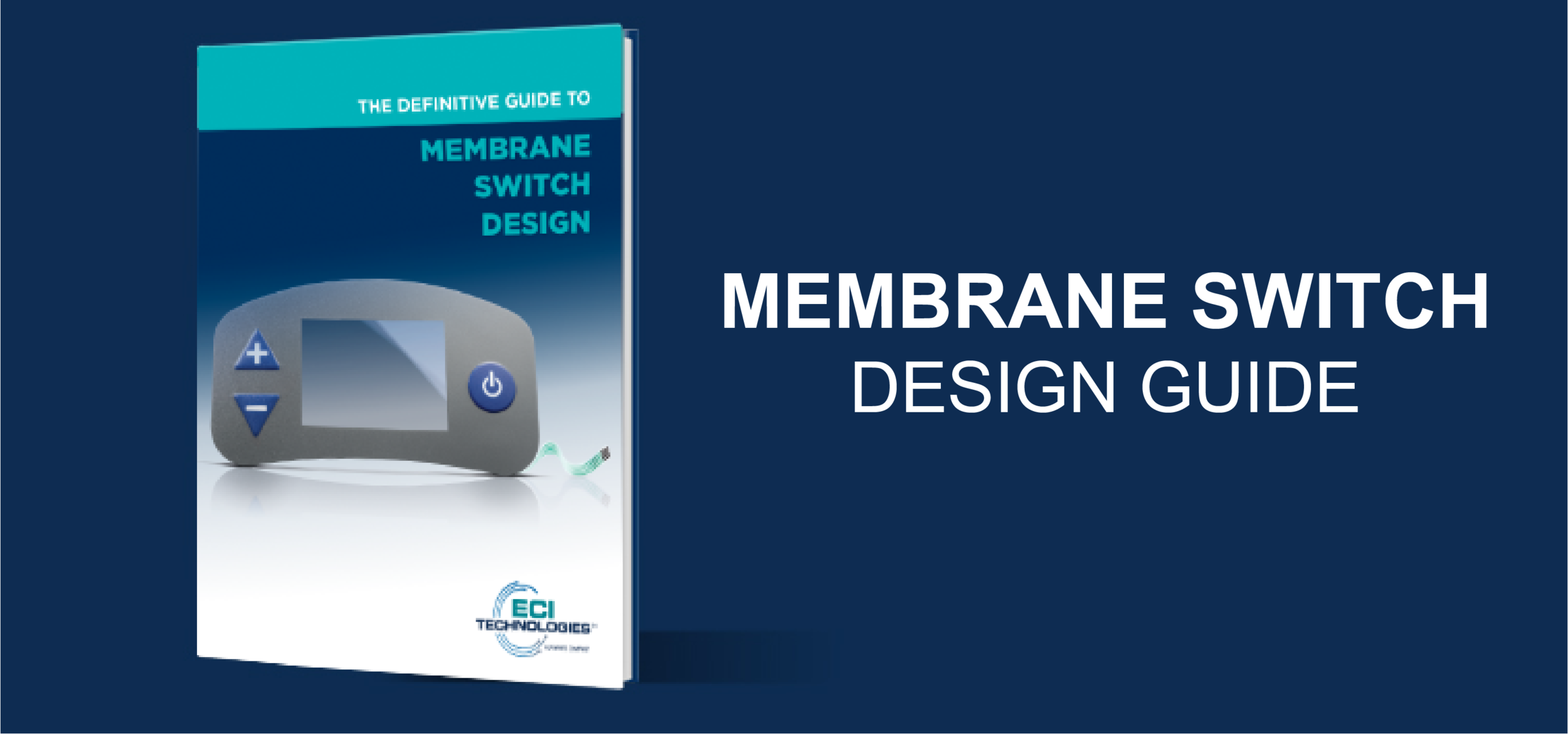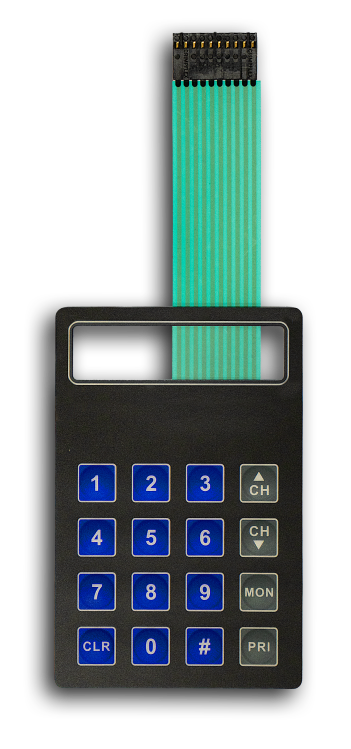Exploring the Future of Membrane Switches in Emerging Technologies
Exploring the Future of Membrane Switches in Emerging Technologies
Blog Article
Understanding the Relevance of Membrane Switches in Interface
Membrane buttons are integral components in the layout of efficient customer interfaces, facilitating not only capability yet also enhancing aesthetic appeal and individual communication. As we discover the various advantages and future patterns linked with Membrane technology, it ends up being clear that these buttons are a lot more than simply parts; they stand for a merging of innovation and practicality.
What Are Membrane Switches?

The spacer layer, which consists of sticky residential properties, enables the separation of the circuit layer from the overlay, guaranteeing that the switch remains in a non-activated state till pressed. When stress is put on the overlay, it compresses the spacer layer, linking the void and completing the circuit in the underlying layer. This design not just lowers the physical area required for traditional mechanical buttons however likewise enhances the durability of the tool, as Membrane buttons are usually resistant to dust, dampness, and other environmental factors.
Generally discovered in applications ranging from customer electronics to clinical gadgets, Membrane buttons are essential to modern-day innovation, providing a reliable and easy to use interface that straightens with contemporary layout requirements.
Benefits of Membrane Buttons
While various button innovations exist, Membrane Switches offer distinctive advantages that make them specifically desirable in different applications. One of the main advantages of Membrane buttons is their compact style, which enables space-saving applications in tools where real estate is restricted. Their slim profile not just boosts visual charm yet also promotes lightweight building.
An additional significant benefit is their resistance to environmental variables. Membrane switches are normally secured against wetness, dirt, and impurities, making them perfect for usage in demanding atmospheres, such as clinical tools and commercial equipment. This toughness expands the lifespan of the switch, decreasing upkeep prices and enhancing reliability.
Furthermore, Membrane buttons can be tailored to fulfill specific design requirements, integrating special graphics and shades that boost customer communication. Their responsive responses options can also be tailored to provide a rewarding individual experience. Furthermore, Membrane switches are affordable, particularly in high-volume applications, as they can be produced efficiently.
Applications in Different Industries

In the customer electronics market, Membrane switches prevail in gadgets such as microwaves, cleaning makers, and push-button controls. Their tactile responses and aesthetic alternatives improve user experience while giving a smooth, modern look. Additionally, automotive suppliers use Membrane switches in control panel controls and infotainment systems, where space is limited, and user interaction is crucial.
Furthermore, the commercial field leverages Membrane buttons in control panels for machinery and tools, permitting instinctive operation in Learn More Here often extreme environments. Their resistance to chemicals and wetness ensures durability and integrity in these applications. In general, the flexibility of Membrane Switches adds considerably to their prevalent use, making them vital in various technological domains.
Style Factors To Consider for Membrane Switches

When designing Membrane switches, a number of vital considerations should be taken into consideration to make certain optimum functionality and user experience. The selection of materials is crucial; picking sturdy, high-quality substrates can enhance the switch's long life and resistance to ecological variables such as dampness and temperature level variations.
Second of all, the style of the graphic overlay ought to prioritize clarity and ease of usage. Icons and text should be clear, and the layout should facilitate intuitive communication (membrane switches). In addition, responsive comments is vital; incorporating a tactile dome or various other mechanisms can enhance the user experience by giving physical verification of activation
One more important factor is the button's electrical efficiency. Developers should ensure that the conductive traces are effectively created to lessen resistance and prevent signal disturbance. This includes evaluating the required actuation pressure and guaranteeing compatibility with the digital elements they will user interface with.

Future Trends in Membrane Innovation
As technology remains to advancement, Membrane switches are positioned to evolve substantially, driven by innovations in products and manufacturing methods. One arising trend is the consolidation of advanced materials, such as conductive inks and flexible substratums, which improve durability and minimize the total weight of Membrane switches. These products not just improve the tactile feedback but likewise permit the design of buttons that can hold up against harsher environmental conditions.
Moreover, the assimilation of touch-sensitive technologies is transforming standard Membrane Switches into more interactive individual check my source interfaces. Capacitive touch sensing units installed within Membrane switch panels can give a more responsive and user-friendly customer experience, aligning with the growing demand for sleek, contemporary styles in customer electronic devices.
Additionally, developments in printing methods, such as digital and 3D printing, allow fast prototyping and modification of Membrane buttons. This adaptability permits suppliers to react extra promptly to market needs and customer preferences.
Lastly, sustainability is becoming a significant focus, with manufacturers exploring environmentally friendly materials and processes. As these trends unravel, the future of Membrane modern technology guarantees improved performance, aesthetic appeal, and environmental responsibility, strengthening their duty in innovative individual interfaces across various industries.
Verdict
Finally, Membrane Switches stand for a crucial element in the design of customer interfaces, incorporating capability with aesthetic flexibility. Their benefits, consisting of sturdiness and resistance to environmental factors, make them ideal for diverse applications across numerous markets. Thoughtful design factors to consider improve user communication and experience. As advancements in technology proceed, the development of Membrane buttons is expected to additional refine interface, driving development and improving use in a significantly complicated technical landscape.
Membrane switches are indispensable components in the style of reliable individual interfaces, promoting not only performance yet also improving visual allure and user interaction.Membrane Switches offer as an important address element in numerous user interfaces, helping with a smooth communication in between users and electronic gadgets.While many button technologies exist, Membrane Switches deal distinctive benefits that make them particularly desirable in various applications.Furthermore, Membrane switches can be personalized to satisfy certain layout needs, incorporating unique graphics and shades that enhance customer interaction.In final thought, Membrane Switches represent an important element in the style of individual interfaces, integrating performance with aesthetic versatility.
Report this page